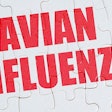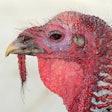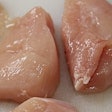In today’s poultry industry, balancing cost and performance is an everyday challenge that requires an understanding of the interconnected nature of many production elements. Nutrition plays a critical role in maintaining production and economic feasibility. There are many strategies and additives aimed at maximizing performance and maintaining animal health and welfare while keep costs within acceptable margins. While litter management is not often thought of in conjunction with nutrition, it plays a critical role in maintaining animal health, performance, and welfare; and it can be greatly impacted by nutritional changes.
Understanding the Link between Litter and Nutrition
In antibiotic-free production (ABF), we must make smarter more balanced decisions, often starting with prevention. Feed additives like pre- and probiotics can be a valuable tool (Griggs and Jacob, 2005); the key is to determine what is needed from the feed additive and under what conditions the additive can deliver the needed performance.
Litter management works in a similar way. Litter management programs need to go far beyond decaking and application of litter amendments. Production must be based on an understanding of the impact of nutritional changes, ventilation, vaccination, litter quality, seasonal considerations and other variables. Common litter management strategies, such as windrowing, de-caking, tilling, cleaning out, and using built-up litter can cause different end results when it comes to pathogen load and ammonia build up. Knowing when it’s time to clean out, determining the correct downtime, and understanding the relation between overworking the litter, pathogen load, and downgrades in paw quality for example become highly important in ABF production.
Environmental sustainability is now an important pillar in the foundation of many poultry integrators. One factor to keep in mind is that over fortification of diets with above recommended levels of trace minerals will result in excess excretion of nutrients in the litter, which can be of detrimental impact to soil and water quality (Nollet, et al., 2007).
A Fresh Look at Litter
Years ago, litter management was just another step prior to chick arrival. However, with the industry’s transition into ABF, our practices throughout the production chain needed to evolve. Microbiota is now a more common term in our industry, mainly used in publications discussing gut health. However, litter can also be said to have a microbiota that in fact will shift towards more or less pathogenic bacterial populations depending on how we manage the house and the nutrition given to birds. Establishing the right environment for broilers to express all their genetic potential starts from the ground up.
Nutrition in ABF
Nutritionists dealing with ABF production are given the challenging task of achieving the same cost-efficient performance in an ABF system as in the conventional poultry grow-out. Poultry diets are composed of numerous elements that, together with water, provide the energy and nutrients essential for the flock’s performance.
On the nutrition side, prevention strategies in ABF include improving feed digestibility by using exogenous enzymes in order to reduce anti-nutritional components in the feed. Paiva, et al., 2013 reported that lower addition of calcium in combination with super-dosing of phytase can help lower necrotic enteritis and improve broiler performance. Formulating diets using precision formulation in order to avoid excess of nutrients in the gut becomes fundamentally important. Any deviation from suboptimal digestibility can result in a substantial change of the microbiota in the gastrointestinal tract and litter as well.
An alternative to prevent excess protein in the feed is the use of synthetic amino acids which can help prevent excess ammonia build up in the facility. Failure to prevent this ammonia buildup—in addition to poor litter management—can lead to high ammonia releases during the flock, which has negative consequences on animal health and welfare. Precision formulation also allows for less wastage of nutrients that can be used in the hind gut by pathogenic microbes. Processing that results in feed that is highly digestible, pelleted and crumbled to the highest standard in addition to a stricter feed quality assurance program should be implemented. Preserve ingredient quality at all times.
Observations from the Field
Often times, the solution to a problem in performance, animal health or nutrition can be found out in the field. For example, downgrades in paw quality can be the result of elevated ammonia levels, which can be seen when relative humidity in the house remains high—a product of improper ventilation or poor management. Producers overworking the litter may also be creating an environment that can favor ammonia flux. In addition, litter conditions may facilitate pathogen proliferation which can wreak havoc in a poultry house, especially if nutritional measures are not taken in order to establish gut health. Excess of wheat or protein in the rations can lead to wet floors in the houses, which can cause major changes in the environment of the house.
Enteric Health and Litter Health
In ABF production, major attention has been placed on coccidia, clostridium and salmonella control. Cocci and problems with clostridium commonly seen in a poultry house are intrinsically related, meaning measures that aid in the control of cocci are measures that will impact problems associated with clostridium too. Common challenges in ABF production include enteric health, coccidiosis and prevention of necrotic enteritis (Cervantes, 2015). Nutrition strategies that avoid the introduction of stress in the flock during peak cocci cycling is one important tool.
Managing litter in ways that avoids adding stress to the flock are also important:
-
Assure ammonia concentrations in the house do not induce more stress
-
Maintain RH at recommended levels to avoid caked litter and wet floors
-
Ensure floor pH is not conducive for pathogen proliferation
Field experience has shown that failure to establish a good cocci control program can lead to necrotic enteritis. A successful cocci control program often relies on the establishing of good cocci cycling and seeding of the house in order to build an immune response from the birds over time. The way this environment (litter) is managed and altered should be take into account when evaluating the program.
Focus on Birds and Their Environment
The need to have a holistic approach that includes nutrition and litter management strategies is necessary in order to ensure flock performance, animal health and welfare, and economic feasibility in ABF production. It is key to understand that any good pathogen control measure and management decision in ABF requires focusing on the birds and also their environment.


















